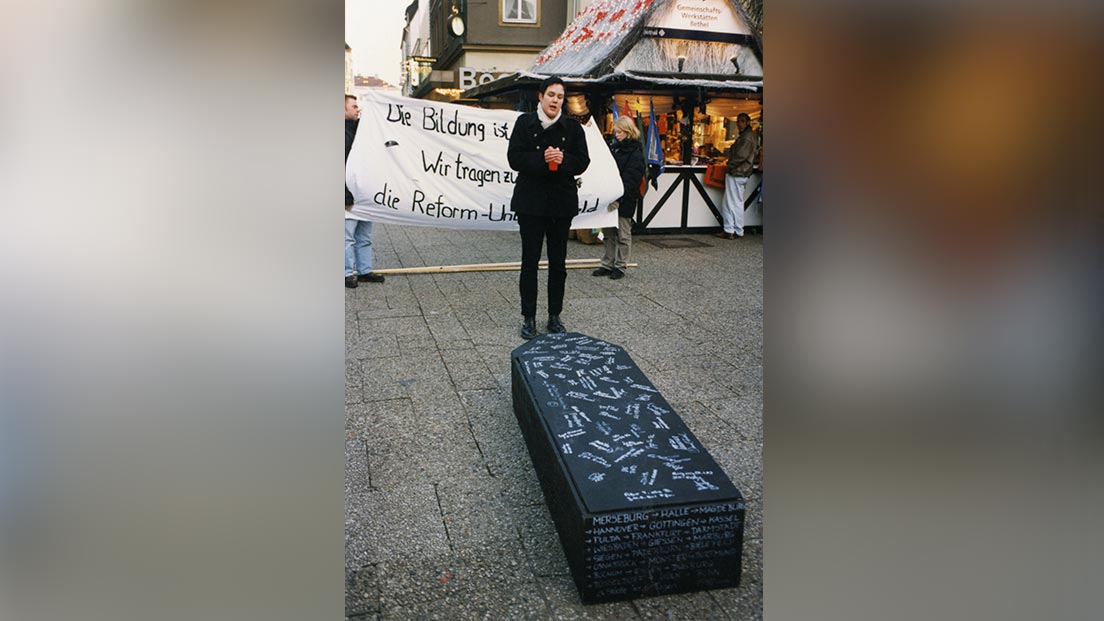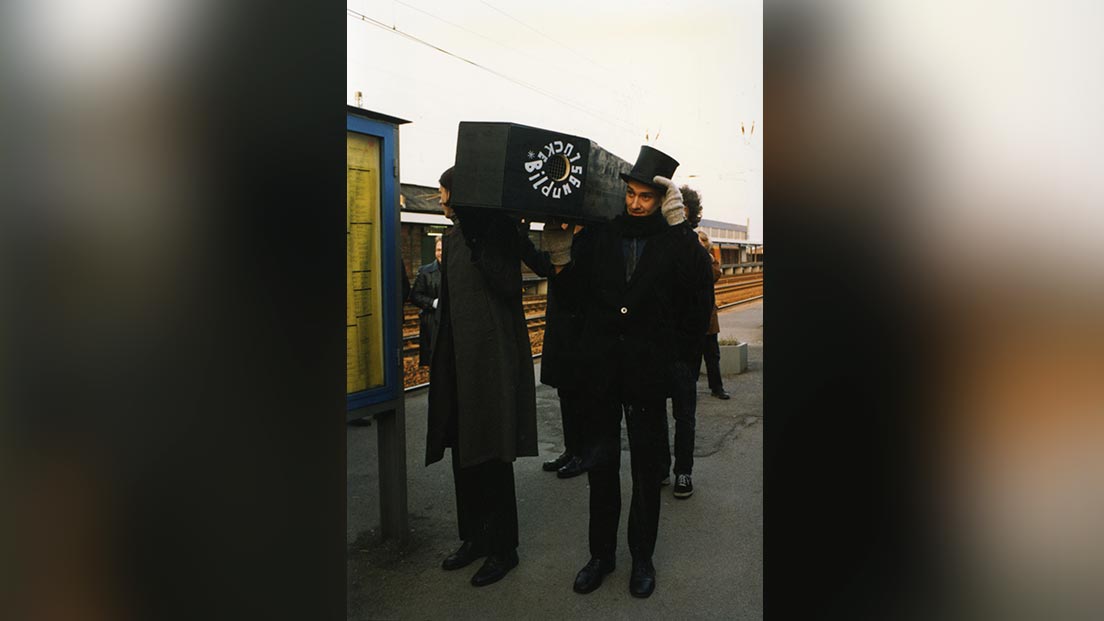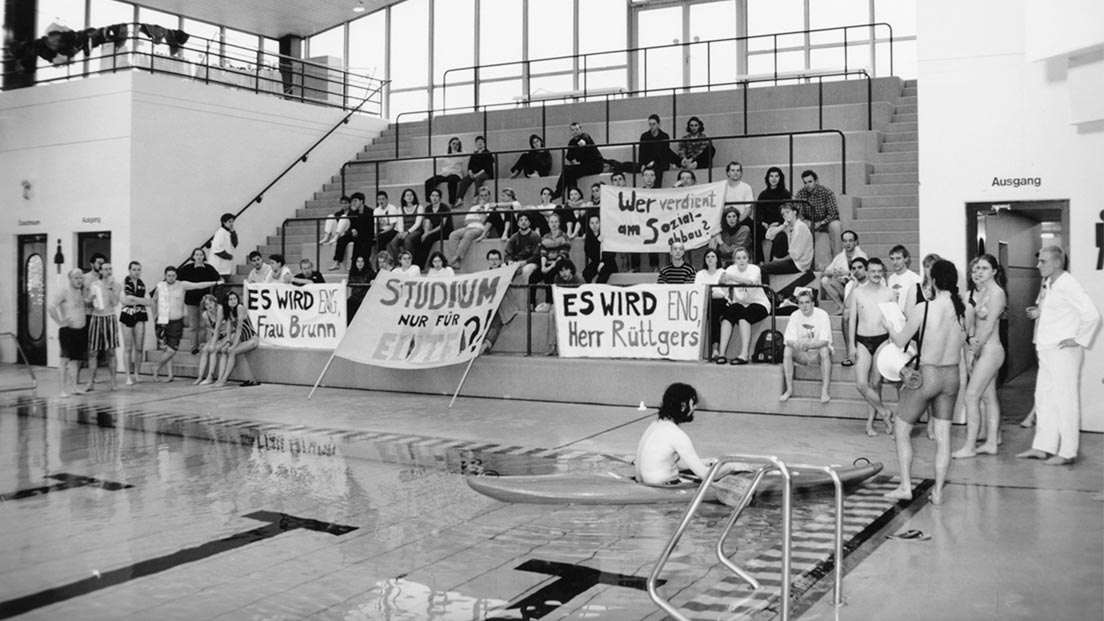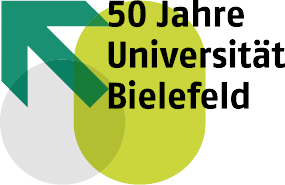
–
Photo: unknown
Source: Universitätsarchiv Bielefeld, FOS 01744
For the first time in the history of the Federal Republic of Germany, and nowadays a matter of course, “computer-mediated communication structures” provided an unexpected boost to mobilising interest. Mail networks were created and “strike sites” updated almost every minute. The protest, however, didn’t need new technology to be creative: On the occasion of the ‘funeral’ of the reform University in Bielefeld, a coffin was carried through the city, which had a “Bildungsluecke” (“education gap”) on its side. (The German term “Bildungsluecke” refers to an embarrassing gap in someone’s general knowledge.) The coffin toured through the whole of German to accompany the student protests.
–
Photo: unknown
Source: Universitätsarchiv Bielefeld, FOS 01745
Bielefeld saw the biggest student protest up to that time. According to the organisers, around 10,000 students and pupils marched from the University to Bielefeld town hall on 2 December. The AStA (student union) described the atmosphere as “chaotic, wild, wonderful and insanely good”. But after speeches were made by politicians wanting to improve university facilities, the protest organisers had difficulties in breaking through the increasing indifference of many students in the run up to the Christmas break.
–
Photo: unknown
Source: Universitätsarchiv Bielefeld, FOS 01738
After the highs comes disillusion
Even though the strike was extended again on 15 December (albeit with only a small majority in the student plenary session) the enthusiasm ebbed away due to the Christmas break. On 5 January the strike was declared over. None of the main demands had been implemented, but according to the organising committee the strike had still been worthwhile as it had drawn attention to grievances at the University at that time. Soon after, the elections to the student parliament (StuPa) showed that the activist fever of the pre-Christmas period had been dropping and no lasting mobilisation had taken place. Voter turnout fell to a modest 12.75 % and the results were similar to the previous year. Only the “No Smoke” listed group was newly elected to the StuPa with 10 % of the vote, helping to later bring about a ban on smoking in the main university hall.

